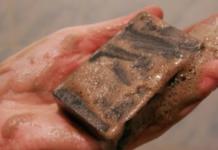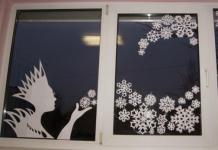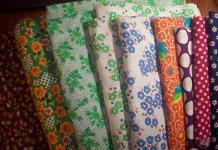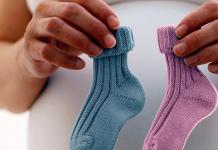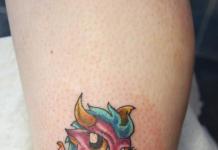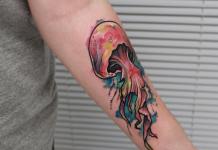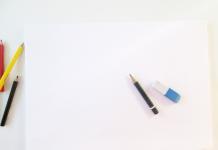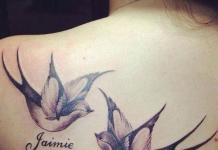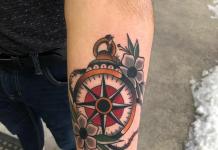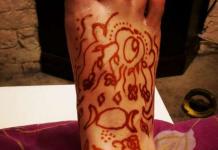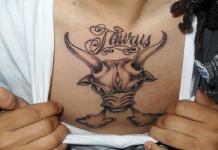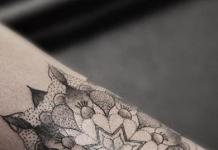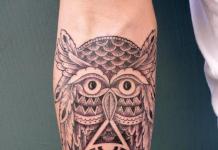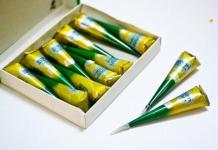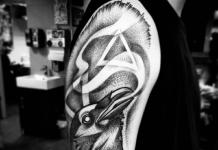MEMBRANE is a thin-layer coating of the inner surface of the fabric. The membrane provides a favorable climate inside the garment, and microscopic pores allow water vapor to escape while blocking the penetration of moisture from the outside.
Membrane fabric consists of two layers: top fabric ( can be absolutely any, both thin and dense) and, directly, the membrane - the thinnest polymer film with specially shaped pores that provide one-sided water permeability (moisture from the inside freely migrates through the membrane, while moisture from the outside is retained by the membrane).
How does it work?
External moisture does not penetrate inside, excess heat and water vapor (our sweat) from the inside comes out through the fabric, which improves the thermoregulation of the body.

What do the numbers and characteristics mean?
Any membrane clothing has two specifications on the label, usually through a slash, like 5000/10000 or 5000mm/10000g. The first parameter is water. The second parameter is air.
1. The water resistance of a fabric is measured by the water column it can hold without getting wet. Unit mm.
2. Vapor permeability (Breathability) characterizes how much moisture in the form of steam passes one meter of fabric out in 24 hours. Unit of measure g/m2/24 hours. The higher the value of these parameters, the better.
* For comparison: the maximum water resistance of cotton is 500 mm, synthetics without special treatment - 1000 mm. At the same time, the vapor permeability required for active sports, such as skiing, is 10,000 g/m2/24h, and for walking - 3000 g/m2/24h.
BREATHABLE - membrane fabric for non-extreme conditions. Used in Caimano products. Water resistance 2000 - 5000 mm. Breathability 2000-5000 g/m2/24 hours.
Types of features used in Color Kids clothing
Air-Flo 10000: Waterproof, windproof and breathable.
Maximum protection in the harshest weather conditions.
Finish: Laminated membrane
Water repellency: + 10.000 mm
Windproof: yes
Vapor permeability: + 5000 g/m/24 h.
Seams: Fully taped (FTS)
Air-Flo 5000: Waterproof, windproof and breathable
Excellent protection in all weather conditions.
Material: AF 5000 PU coating / laminated membrane
Water repellency: + 5.000 mm
Windproof: Yes
Vapor permeability: +5000 g/m/24 h.
Seam Taping: Fully Seam Taped (FTS)
Air-Flo 3000: Waterproof, windproof and breathable
100% protection in all weather conditions
Material: AF 3000 PU coated
Water repellency: + 3.000 mm
Windproof: Yes
Vapor permeability: +2000 g/m/24 h.
Seam Taping: Partial Seam Taping (PTS)
Air-Flo 2000: waterproof, windproof and breathable
Effective protection in all weather conditions.
Material: AF 2000 PU coating Water repellency: + 2.000 mm
Windproof: Yes
Vapor permeability: yes
Taped seams: No
So, first we will deal with the parameters themselves. What is water resistance and how to measure it? Water resistance is the height of the water column that the membrane can withstand without getting wet. Measured in millimeters. Thus, the higher this indicator, the better. PSI (Pounds per Square Inch) is used to measure water resistance. All materials with a PSI value over 25 are considered to be waterproof, and a value from 1 to 24 PSI indicates water resistance of materials. To better represent these figures, let's take an example: a drop of water carried by a hurricane-force wind is about 6 psi when it hits the surface. So 25 psi is quite an impressive number.
But not everything is so simple!!! There are many tests for measuring water resistance, and they are also not interconnected with each other. Moreover, each manufacturer of membrane fabrics chooses for itself which test to write the result of the psi parameter. Let us give an example of the main types of material testing.
There are 2 general types of tests:
1. Water column - a test in which the flask is filled with water and the pressure of the water column is measured, that is, the height of the water in millimeters. This test is generally only used on materials with low levels of water and wind resistance.
2. Hydrostatic water head (Sater test) - The test uses a pump to transfer water pressure to the material. The results can be presented in PSI or in millimeters as the head of the water.
This test has many variations:
- the diameter of the tested tissue sample can vary from 1 to 4 inches;
- the action of pressure can occur slowly or quickly;
- the coating applied to the material can come into contact with water.
All these changes will affect the result. But of course, the results are expressed in the same units.
Hydrostatic tests, such as the Mullens, Suter and Modified Suter tests, have long been recognized as useful in measuring water resistance. But to what extent? In the modified Sater test, the water pressure rises slowly (0 psi - >30 psi) and the moment three drops of water appear on the surface of the material is recorded. This test best shows how the material will behave in natural conditions.
The Mullens test, in addition to measuring psi at the moment drops appear on the surface, measures psi at the moment the material breaks. But water can begin to seep through the material long before the material loses its strength. This test may be useful for testing the breaking load of cartons, but we rarely carry cartons in the rain.
The Suter test is very useful for measuring local errors such as a hole that will start leaking under very low water pressure. This test can be used to identify areas of error on clothing that has been repaired. In the Mullens test and in the modified Sater test, it is considered that the higher the score, the more water resistant the material.
Mullins test - ASTM D751: originally developed for testing the breaking load of cardboard boxes. During this test, a strong jet of water is directed onto a very small surface of the material (1”). This ancient test is used by the US government and some membrane fabric manufacturers because it gives a very high psi value. However, this figure can be highly inaccurate. Since the material is considered unusable when it actually breaks, the test does not determine if a leak has occurred until the material has been damaged.
Hydrostatic head, or Suter Test - JIS, ISO 811, one of the ASTM standards: they are all essentially the same. These tests use a 4-inch sample that is subjected to water pressure until the material can no longer handle the pressure. The test is considered complete when 3 drops of water appear on the surface of the material. Usually this effect is achieved in about one minute.
UK Water Entry Pressure test (or the British Standard Suter): measures the same as JIS, ISO and ASTM except for the rate of increase in water pressure. The pressure increases very slowly - 1.5 PSI per minute. This means it will take 26 minutes to test a 40 PSI material. A very good test, but it takes too long and is not an indicator of real conditions. This is the most preferred test for Gore.
Thus, the Hydrostatic head test and the British water pressure test are more in line with practice. The two tests are similar in many ways when the same material is being tested. The table shows the indicators obtained by Marmot specialists on the basis of the British test, or the Sater Standard, as well as the results of the Hydrostatic head method.
The following table can be used to estimate the required water resistance.
Table of indicators of water resistance of membrane materials.
| Membrane | Moisture protection, PSI | Water resistance, PSI | Water resistance, mm |
| Gore-Tex XCR 2L | 40+ | 20 000+ | |
| Gore-Tex XCR 3L | 40+ | 25 000+ | |
| Gore-Tex Performance Shell 2L | 40+ | ||
| Gore-Tex Performance Shell 3L | 40+ | ||
| Gore-Tex Pro Shell 2L | 40+ | ||
| Gore-Tex Pro Shell 3L | 40+ | ||
| Gore-Tex PacLite Shell | 40+ | ||
| Gore-Tex Soft Shell | 40+ | ||
| Gore Dry Loft | 40+ | ||
| Gore Windstopper SoftShell | 20 | 20+ | |
| Windstopper Fleeces | 20 | ||
| Polartec Windbloc SostShell | 20+ | 10 000+ | |
| MemBrain 10 (2L) | 25+ | 10 000+ | |
| MemBrain LT (2.5 L) | 40+ | 20 000+ | |
| MemBrain 3L | 40+ | 20 000+ | |
| MemBrain 2L | 40+ | 20 000+ | |
| MemBrain Strata | 40+ | 20 000+ | |
| MemBrain for insulation | 20+ | 20 000+ | |
| Pertex | 1 000 | ||
| Pertex Quantum | 1 000 | ||
| PreCip 1.5L | 30+ | 15 000+ | |
| PreCip Plus 1.5L | 40+ | 25 000+ |
What is a membrane? How many pockets should there be? What should be the fasteners? How to properly care? Where can I buy?
Compile a review of winter sports clothing - what could be easier, it would seem? How difficult is it to collect several jackets and trousers, matching them with bright hats with pom-poms, gloves and mittens? But I could not even imagine how global my delusion was. After a long study of forums and websites, looking at photos of happy friends on the snowy slopes and interviewing acquaintances, it became clear that the most problems arise with the choice of clothing for snowboarding and skiing. A poorly chosen set can discourage a beginner from riding and upset an experienced rider who had high hopes for the new season. The material was accumulated in a number of articles, and the first one is devoted to the choice of a snowboard and ski jacket.
Autumn-winter collection of Icepeak brand.
What to pay attention to?
The main requirements for clothing for skiing are lightness, warmth, practicality, water and wind resistance. A snowboard jacket is usually larger than a ski jacket - this is their main difference, and the rest of the parameters are about the same. When trying on a jacket, you need to fully zip up and raise your hands up - clothes should not restrict movement and ride up. It is better to pay attention to things in bright colors and with reflective stripes that will help you be visible in the snow and in poorly lit places.
What else is worth paying attention to?
1. Laser perforation on the collar is necessary for ventilation, the same usually happens in the underarm area.
2. Lightning must be impregnated with a special compound so that it does not get wet.
3. Zip tabs should be large and non-metallic so that they can be easily unzipped while wearing gloves.
4. The cuffs should be double-layered, the inner one should be made of fleece or polartec or lycra, the outer one should be elasticated with flaps with buttons or Velcro.


5. Snowboard jackets should have a large hood to fit over a helmet, while ski jackets should have a small hood. The visor will protect from snowfall, and the side wings and transparent windows will protect from the wind.
6. The inside of the collar should be made of polartec or fleece, which quickly remove moisture.
7. The lining of the jacket should be made of synthetic or semi-natural materials that easily absorb moisture and dry quickly.
8. The seams must be glued and reinforced with a special tape.
9. Pockets should be located on the sides, on the chest - for a phone or walkie-talkie, on the sleeve - for a ski pass and inside - for documents.
10. Buttons inside the jacket are necessary for fastening trousers, so the snow does not get under the clothes.
11, 12. The inner skirt and elastic fasteners should protect against snow.
Label
The presence of a membrane is considered important - this is an internal coating of the fabric or a special weave of threads, due to which water does not pass inside, and body evaporation is easily removed.
The water resistance of the membrane is indicated in millimeters and means what column of water the jacket can withstand during the day.
3000 mm is the minimum value at which the jacket can be worn in snow or light rain, this indicator is more applicable to urban environments than on slopes.
10000 mm is the average value at which the jacket will not get wet in heavy rain and snow.
30000 mm is the maximum value at which the jacket can withstand extreme weather conditions.
Vapor permeability is determined in grams of water, which the fabric area of 1 square. m. passes in 24 hours.
5000 g/sq.m. - an average figure suitable for traditional skating.
10000 g/sq.m. - the maximum indicator applicable for professional sports.
The best fabrics are Goretex, Dermizax, Pertex, Prooface, MemBrain, PreClip. They have a waterproof rating of at least 20,000 mm, and breathability of about 6,000 g / sq.m.
Outside, the fabric is coated with an additional water-repellent DWR layer, thanks to which water does not absorb, but rolls off the surface of the jacket. Such a coating is short-lived, but it can be updated with the help of special products sold in stores with snowboard or ski equipment.
A few words about care: jackets should be washed by hand using special products or, in extreme cases, laundry soap. Such clothes must not be ironed, otherwise the outer fabric may be damaged.
Where to buy?
When choosing a jacket, you should first decide on its purpose. The equipment of an avid rider is not suitable for a beginner, and smart jackets are not suitable for athletes who spend most of the day on the slopes. Clothing that is comfortable to ride, for example, in the Moscow region, will not withstand the load in the mountains, where there is high humidity.
Among snowboarders, clothing brands Burton, 686, DC, Quiksilver, Bonfire, Volcom are popular. Skiers choose things from the brands Bogner, Schoffel, Rossignol, Icepeak, The North Face, Phenix. The Russian companies Baon, Red Fox, Bask, Stayer have also proven themselves among outdoor enthusiasts - clothes are made from high-quality materials, and the prices are quite affordable.
Experienced riders prefer to order clothes in online stores, focusing on technical specifications. For beginners, it is better to go to specialized stores, such as, for example, Kant, Trial Sport, where sellers will help you choose the first set.
 Men's jacket brand 686, indicators - 10000mm / 8000gr
Men's jacket brand 686, indicators - 10000mm / 8000gr
 Women's jacket DC, indicators - 10000 mm / 10000gr
Women's jacket DC, indicators - 10000 mm / 10000gr
 Men's jacket Bonfire, indicators - 10000mm/8000 gr
Men's jacket Bonfire, indicators - 10000mm/8000 gr
 Icepeak women's jacket, measurements - 3000mm/3000gr
Icepeak women's jacket, measurements - 3000mm/3000gr
 Bask versatile jacket
Bask versatile jacket
Women's jacket Stayer, indicators - 10000mm / 15000gr
When buying overalls for a child, more and more parents pay attention to the technical characteristics of fabrics. Each manufacturer has its own designations, combining the properties of fabrics and other characteristics of the product presented, as a rule, in the form of icons. The number of these badges sometimes reaches 50 pieces. When choosing an assortment for Dynomama, I study and analyze all these characteristics, but do you need it? I think not. Therefore, I decided to write a series of articles in which I will talk in simple terms about the most important characteristics of the fabric. Last time I explained what a membrane is, and today I will talk about waterproof rating- one of the most important indicators for outerwear.
What does waterproof rating mean?
Water resistance is measured in millimeters of water column and shows how much water the fabric can withstand without getting wet. This indicator usually comes first on the label and looks like this: 5000mm.
How is water resistance achieved?
Water resistance is achieved due to special impregnation of the fabric, the presence of a membrane, as well as due to the properties of the fabric itself (polyurethane). In addition to the properties of the fabric itself, the presence of glued or sealed seams also affects the waterproofness of clothing.
How fabric is tested
The waterproof properties of a fabric are determined something like this: they take a piece of fabric, put a flask on it with a certain level of water (1000mm, 5000mm, etc.) and see if the fabric gets wet. But not everything is so simple: the area of influence of water can be different, the strength and speed of water pressure, as well as the timing of testing may differ.
With patented membranes (for example, Gore-Tex), everything is clear, but they are very expensive and it is quite expensive to buy them for children who are growing rapidly. Therefore, manufacturers of outerwear for children invent their own analogues, which themselves test and declare the appropriate properties of the fabric on the labels.
Preliminary conclusions
As I wrote above, the results of testing for water resistance depend on several factors. So it doesn't mean that a 5000mm Reima suit will get wet faster than a 10000mm Huppa suit. I’ll tell you a secret, I have a child and in Didriksons with an indicator of 2000mm I sat in a puddle and didn’t get wet.
How to make the right choice
If the indicator of waterproofness of the overalls is in the first place for you (which is especially important in the off-season), then opt for models with a level of 5000mm and higher. If your child bypasses puddles or you have a separate set of rubber clothing for rain, then do not be afraid of things with an indicator of 1000 mm, they will protect you from drizzling rain.
In what weather to wear things with a waterproof rating:
up to 1500mm - the lowest figure, the thing can be worn in dry weather or drizzling rain.
from 2000mm to 5000mm is a good indicator, the thing will withstand light rain, sleet, slides wet after rain, individual splashes, but it can get wet if the child likes to wallow in wet snowdrifts or splash through puddles.
from 5000mm to 8000mm - a high figure, in such clothes you can walk in the rain, jump in puddles, but if the exposure is too long, you can get wet.
above 8000mm - an excellent indicator, the thing is suitable for extreme weather conditions and will withstand the entire range of whims of our winter, autumn and spring.
Important to remember:
no matter how impenetrable the thing is, everyone can ruin the seams - when choosing a thing for slush, pay attention that all (or the most important) seams are glued or soldered. It will not be superfluous and tightenings, which will exclude the ingress of moisture "bypassing" protective clothing.
impregnations are erased over time and the waterproof properties declared by the manufacturer become less. You can restore them by buying a special impregnation and processing the thing according to the instructions.
Currently, selling camping equipment, a huge selection of tents from various manufacturers. Prices for different models from different manufacturers may vary several times.
Let's try to figure out what prices depend on.
What are we buying?
In this review, we will not compare various designs, as well as the differences inherent in trademarks.
Of course, a promoted brand is more expensive, but we should not forget that a serious company (brand) always values its name and cannot afford to offer poor quality products to the buyer.
So, buying a little more expensive, you are insured against the troubles that may arise during operation. And the more difficult, more stressful the operating conditions are, the more the safety of the person using this equipment depends on the quality of the equipment.
Other things being equal, different models of tents use different fabrics, accessories, threads, etc. It is these most important components of any product, on which the cost of equipment and its functional properties mainly depend, let me draw your attention in this article.
Tourist tent: materials, technologies, quality
CODING tent materials
Tents and materials produced in different countries, by different manufacturers, are labeled quite differently. Moreover, you will not find two companies that would label fabrics in the same way.
A complete mess is observed in the numbers describing such properties as water resistance, "breathing" properties of membrane materials, strength, weight. This is due to the use of data obtained from various tests conducted under different conditions. Many firms "forget" or consider it unnecessary to provide accurate data - often this is dictated by competition.
When choosing a tent, you should pay attention to the designation of the awning fabric.
Here is what can be found in various descriptions:
- Rip Stop Nylon 190T
- 210T Rip Stop Nylon PU 3000
- 185T Polyester Taffeta PU/Si
- 210T Rip Stop Nylon PU
- 70D Polyester Ripstop W/R
- 75D Polyester Ripstop PU/ SI
- 70D Nylon Taffeta 210T PU
- 75D Nylon Taffeta W/R
- 75D Poly Taffeta PU
Let's deal with these codes in order. The description may contain information about the following properties of the fabric:
Density (strength)
There are various ways to mark the density of a fabric:
- Thread Count is the total number of threads per square inch in the longitudinal and transverse directions (for example: 210T means 210 threads). The higher the number, the denser the fabric.
- Den (Denie) - the thickness of the threads involved in the weave (for example: 75D).
The chemical composition of the threads:
- Polyester, Poly - polyester.
- Nylon - nylon (polyamide).
Type of fabric weaving (for example: Rip Stop, Taffeta - fabrics with weaves, where a thicker thread is woven through a certain number of threads. In this case, the fabric will be more tear-resistant with a slight increase in weight).
Tactel - type of special threads (sometimes: Nylon 66, Dupon Nylon 66, Tactel, etc.); usually a proper name.
Type of fabric treatment (e.g. PU 3000):
- PU - polyurethane coating (usually applied to the inside of the fabric).
- 3000 is the water resistance index of the fabric in millimeters of water column (up to 1500 mm - the fabric cannot be considered waterproof, it will start to leak when it rains; 3000 mm or more - the awning fabric will withstand almost any weather conditions).
- PU/SI - polyurethane coating plus silicone, which can be applied on the inside or outside of the fabric.
- W/R - water-repellent coating on top of the fabric.
An example of a complete description of the tent awning material:
70D/75D Nylon Taffeta 210T PU 3000 W/R
- fabric made of special polyamide yarns with a Taffeta weave type, 70D in the longitudinal direction and 75D in the transverse direction
- density 210T
- with a polyurethane coating that "holds" 3000 mm of water column
- the fabric has a top water-repellent treatment
Brief comments on all parts of the tent
awning tent
- The thickness of the threads is responsible for the strength. Thicker threads give more weight to the fabric.
- Thread count is an equally important parameter.
- Loose fabric - warps, stretches a lot and, as a rule, is not durable.
Polyester is more resistant to UV radiation than Nylon, which is very important for awnings. Also, Nylon fiber fabric stretches when wet and shrinks when dry (i.e. you have to re-tighten the Nylon awning each time the humidity and temperature change)
Water resistance (water resistance - measured in mm of water column), a very important indicator.
The 3000mm awning fabric will withstand almost any rain.
It is important that the water resistance value indicated in the characteristics of the tent is true (this is not the case for many companies).
Water resistance of 3000 mm is achieved by double application of polyurethane impregnation, 5000 mm by triple application and so on.
It is clear that each application is an additional weight and price. PU impregnation is applied from the inside of the awning. At the "right" factories, it is applied in such a way that it does not crumble, does not crack and serves for a long time.
The question arises: why do we need such high water resistance, if we are not going to put up tents under water?
The point is this. A drop of water with a certain weight, falling from a great height, has kinetic energy and, when hitting an awning, can simply "pierce" a material with low water resistance.
The second reason is that the material gradually wears out and begins to leak over time. Accordingly, the greater the water resistance of the tent, the longer your tent will serve.
Silicone treatment is usually applied to the top or bottom layer of the material (it can also be applied over the PU impregnation, but in this case it is not possible to glue the seams).Most tent companies now use fabric with silicone on the outside.This impregnation is very durable and functional: silicone does not allow moisture to accumulate in the fibers of the fabric. At the same time, the silicone coating significantly increases the tensile strength of the fabric.
If Rip Stop weave is used, this fabric will be more durable with a slight increase in weight.
All tent manufacturers abbreviate the descriptive part when specifying the characteristics of the materials.
Pay attention to gluing the seams. They must be glued with a special thermal tape. If you are told about the special properties of the fabric, in which the holes from the needle are tightly tightened around the thread and do not allow water to pass through, I dare to assure you that after a short period of operation, the fabric will stretch and flow like a sieve in heavy rain.
INTERNAL TENT
If the awning of the tent is designed to protect you from the rain, then you have to live in the inner one. Like your favorite room, the inner tent should be comfortable (additional pockets, strong seams, large living volume).
Pay attention to the color of the inner tent: it should be light, combined with the color of the awning. Otherwise, the morning will seem bleak to you. Light, passing through two obstacles, can change the complexion of the inhabitants of the tent to unrecognizable. It's not very pleasant to see a neighbor's blue or green face every morning.
The fabric from which the inner tent is made must have the following properties:
- Be light and strong (preferably Rip Stop weave) as the inner tent takes on a significant load during operation.
- Have good "breathing" properties, but at the same time retain the wind.
- It is desirable that the inner tent has a water-repellent W / R treatment. Such impregnation will save you from drops of condensate, which, under certain weather conditions, appear on the inside of the awning. Drops will roll down without penetrating into the living space. The W/R treatment does not impair the breathability of the inner tent.
For an inner tent, Nylon is better. It is softer and more tear resistant than polyester. UV resistance for an inner tent is not important.
BOTTOM OF THE TENT
The material of the bottom of the tent can be made of fabric or structural polyethylene (as on the bags of the "shuttles" in which they transport their goods). Polyethylene is usually used in cheap tents; fabric is in good
The fabric at the bottom of the tent should be more waterproof than the tent awning.
- 5000 - 10000 mm is enough to prevent water from penetrating inside the tent with strong pressure. The floor fabric is under pressure from the bodies of sleeping tourists. This pressure can cause the fabric to become wet.
- Floor fabric with 3000mm water resistance can withstand body pressure;
- 5000 mm - leg pressure;
- 10000 mm - elbow pressure
Check if the seams of the bottom of the tent are welded; especially pay attention to corner seams.
Properly gluing them is not easy, many companies save on this operation. Even if the fabric is sufficiently waterproof, water can enter through the sewing needle holes. you can sleep in a puddle.
ARC
An important component of tents is arcs.
Arcs on tents are made:
- fiberglass and epoxy resins (denoted in the descriptions as fiberglass or fiberglass);
- from aluminum alloys of various quality.
The most common brands are:
- 7075, 7001 from AMG (aluminum-magnesium alloy) of Korean production, they are used in high-quality tents;
- 7178, 6061 - require anodizing;
- Russian grades D16T and V95 cannot compete and are gradually being replaced by other alloys.
In addition to the brand of alloy, serious firms indicate its "hardness". Designations 7075-T9 and 7075-T6 differ in that in the first case a stronger alloy is used: arcs from this alloy are used by the most famous tent companies.
Fiberglass is heavier and less durable (service life is 2-5 years), but it also has a number of advantages:
- no residual deformation;
- high strength and elasticity;
- low price.
Fiberglass is about 1.5 times heavier than aluminum alloys. In addition, it does not tolerate large temperature changes and cannot be repaired.
If such an arc is broken, you need to look for a new one. Aluminum arcs can be repaired in field conditions.
The joints of the arcs are also different. The inner sleeve of smaller diameter can be attached to the arch using punching or glue. Sometimes the articulation of the arcs is carried out by flaring.
Minimal backlash and maximum connection strength for archwires with a glued adapter.
ACCESSORIES
But the most important thing is the little things! Imagine that your tent was falling apart at the seams at night in heavy rain. Or the pegs vomited, and the tent was carried away into the abyss. Or you died from insect bites.
That's why:
- The threads must be stronger than the fabric, not rot and not collapse under the influence of sunlight.
- Eyelets should be brass, not iron (this place in the tent is always wet).
- Lightning - extremely reliable (trust the Japanese brand YKK).
- Mosquito net - with small cells.
- Powerful plastic fittings - reliable (trust Duraflex or Nexus).
- The straps are light and durable. They should easily pass through the adjustment buckles.
- Storm guy lines are strong and thin, as well as visible in the dark and during the day.
- Pegs - light and durable, not bending. It is desirable that they do not rotate in the ground, i.e. would not have a round profile.
- The seams on the awning and the bottom of the tent must be welded (glued) with high quality.
This can only be done on expensive equipment, choosing the right temperature, pressure and sizing speed.
In St. Petersburg, you can buy tents at sale prices, just click on the desired tent:
| Tent Trek Planet Fisherman 2 | Tent Trek Planet Toronto 2 | ||
| Tent Trek Planet Toronto 3 | Tent Trek Planet Oregon 2 | ||
| Tent tourist triple Trek Planet Forester 3 | Trek Planet Oregon 3 Tent | ||
| Tent Trek Planet Alabama Air 2 | Tent Trek Planet Palermo 2 | ||
| Oregon 4 Trek Planet Tent | Tent 3-seater Trek Planet Alabama Air 3 | ||
| Tent Trek Planet Palermo 3 | Tent Easy Camp GO Torino 400 4m | ||




